The age of waste: five designers modelling a ‘circular economy’
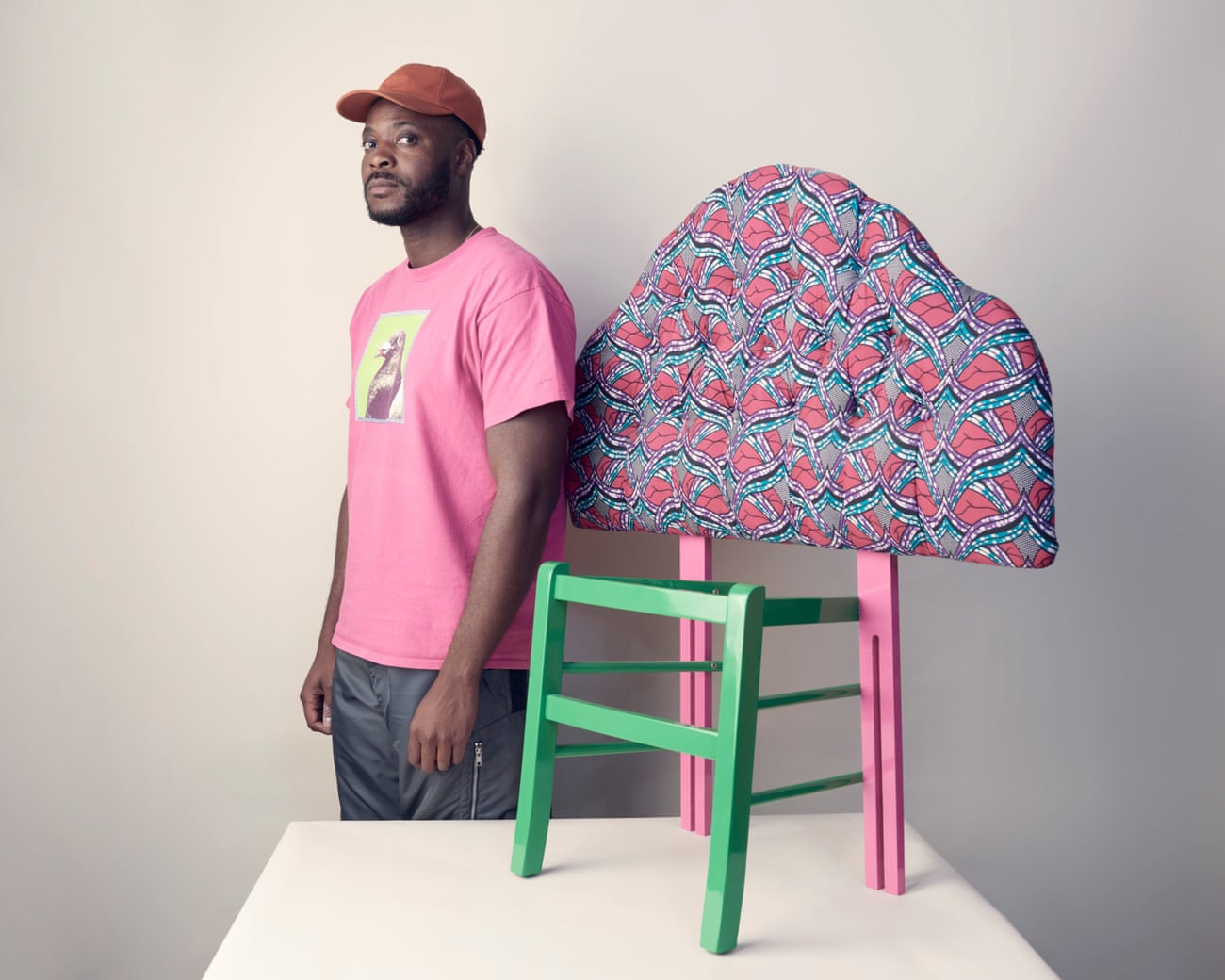
Imagine if everything we threw away had a new life. We talk to pioneering designers whose products are made from waste
Humans have always named epochs of history for the materials that define them: from the stone, bronze and iron ages to the 100 years that straddle the turn of the 20th and 21st centuries, known as the plastics age. But now, as the finite resources of our planet become ever scarcer, are we about to enter the “waste age”?
Two-thirds of the resources we take from the Earth are discarded. We are throwing away, burning and burying the same valuable materials we have gone to such great lengths to excavate – to the extent that copper can now be found in higher concentrations in the ash left over from the incineration of rubbish than in traditionally mined ore. In the UK, we each produce 1.07kg of rubbish every day (it’s almost double that in America). Of the virgin materials used by the fashion industry, 47% don’t even make it into the clothes on the high street. Approximately one-third of all food produced for human consumption is lost or wasted, while we cut down rainforests to make space to grow more. And by 2050, it is estimated that the oceans will contain more plastic than fish.
Ever since the Industrial Revolution, we have been accelerating a linear take-make-waste model that assumes an infinite supply of resources. Now, a new circular economy proposes something more sustainable. One of its key tenets is the notion of keeping materials in use. In a linear model, waste is the end point. In a circular model, it can represent the beginning of something new.
Of course, we must reduce, if not eliminate, waste in new products and processes, but we also have an opportunity to take the legacy of 200 years of linear production and turn it into the starting point for meaningful, long-lasting products – and that’s exactly what a new generation of innovative furniture designers is doing.
It would be a stretch to suggest that their products might save the planet, but perhaps they can offer inspiration for a different perspective. If we can all reframe our own ideas about waste as they have, we will have taken another step in the journey towards a thriving circular economy – one that can meet the needs of the present, while leaving the planet in a state that allows future generations to meet their needs, too.
Tobias Juretzek – Rememberme chair
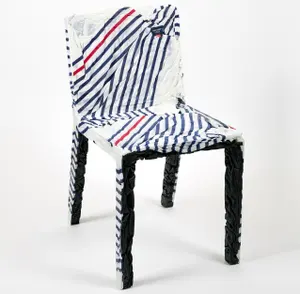
The Berlin-based designer Tobias Juretzek has been making things out of the stuff people throw away all his life. “As a child, I never considered waste as only waste,” he says. “I often experienced the magic of turning discarded objects into something new.”
Today, he works with an Italian recycling company to source unwanted clothes and with Italian furniture manufacturer Casamania & Horm to saturate them with a binding agent and compress them into chair-shaped moulds. It is a very hands-on, and therefore small-scale, process, but he has big plans. He would like to scale up and use the pre-consumer waste streams of the fashion industry.
As its name suggests, the Rememberme chair was inspired by an interest in the nature and value of our relationships with the objects we own. Describing each piece as a “time capsule of living history”, he says: “Characteristics [of clothes] like details, colours and craftsmanship remain visible and create a vibrant product language. Clothes can encapsulate moments and adventures. My furniture transports these memories and gives them a new expression.
“With its unconventional appearance, the chair serves as an ambassador for the value of discarded or unused materials. Even though sustainability is such a hot topic these days, a decrease in consumption is not noticeable. In order to create a more sustainable and progressive world, everybody needs to be involved. The Rememberme chair challenges people to think differently.”
Simone Post – Post Adidas
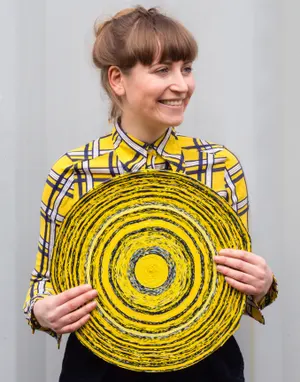
When Adidas heard about Rotterdam-based designer Simone Post’s graduate project to make rugs from the misprinted fabric of a Dutch wax print company, they approached her to make something similar for their stores. But she had a better idea: what about getting them to look at their own waste streams?
The difficulty was that the Adidas supply chain is global – or “big, far away and difficult to see”, as Post puts it. But she hit upon the idea of using old trainers, calling the project Post Adidas. The brand made 409m pairs of trainers between 2008 and 2018, so she didn’t have to look very far for material.
“Sports shoes are made from multiple materials glued together – textiles, metal, soft plastics, hard plastics – and that needs to change because it makes them very difficult to recycle,” she says. “But as a designer, you work with what you’ve got.”
She collaborated with I:CO, a German company specialising in the collection, reuse and recycling of used clothing and shoes that had already developed a method of shredding shoes.
I never stop being amazed by the fresh, perfect-looking thing that emerges from what was considered waste
Post decided to sort the trainer fragments into two colourways: light and dark. More complex separation is beyond the scope of current technologies, but this simple move enabled her to create complex graphic patterns – the melange of different colours is only discernible on close inspection.
The rugs are pressed, with a binding agent, into geometric shapes. “I never stop being amazed by the fresh, perfect-looking thing that emerges from what was considered waste,” she says.
She hopes eventually to use the process to make sports shoes for a fully circular product. Having been told at art school that “fashion is inherently unsustainable, so you don’t have to bother”, Post believes things are starting to shift. “My generation and the generation after us really want to bring about change,” she says.
“There is so much leftover material that we cannot really ignore it any more – and there are now so many initiatives that using waste to improve the system is almost becoming the obvious choice.”
James Shaw – Plastic Baroque
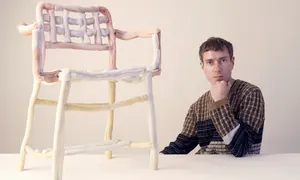
Even recycling generates waste. London-based designer James Shaw’s collection of furniture is made from the sweepings that are left on a plastic-recycling facility’s floor after the processing of high-density polyethylene (HDPE) milk bottles and other food packaging.
With an extrusion gun of his own design, Shaw melts down the plastic pellets and squirts the results into Play-Doh-like strands. With these, he “paints in three dimensions” to create each piece. “I don’t really believe in waste – it shouldn’t exist,” he says. “For my generation of designers, this kind of thinking is just implicit. We have so many high-quality waste products and materials that we are currently doing silly things with, like burying them in the ground or letting them escape into the oceans. It just seems logical to use them.”
The collection is named Plastic Baroque – by combining the word “plastic”, suggestive of cheapness, disposability and ubiquity, with the word “baroque”, evocative of luxury, opulence and excess, Shaw is attempting to challenge perceptions, elevate plastic’s value and inspire positive solutions to the environmental crisis. But it’s not to everyone’s taste and Shaw admits he receives mixed responses. “I am up for things being provocative or disruptive, but at the same time I am chasing beauty,” he says. “Some people really get it, and can see the beauty in it, but some people find it very ugly.”
Despite a few negative reactions, Shaw believes attitudes are starting to change. “Whatever happens, waste will become much more widely used as a raw material,” he argues. “Whether you are predicting ‘climate Armageddon’ or business as usual, resources are becoming more scarce and we cannot keep relying on extraction for the materials we use in everyday life.”
Bethan Gray – Exploring Eden

A collection of accessories and furniture – created in collaboration with sustainable surface specialist Nature Squared – Bethan Gray’s Exploring Eden uses shells and feathers that are discarded in food production. “As long as people are eating shellfish and poultry, this waste is being created,” she says. “It just makes sense to find a use for it.”
Bright pink scallop shells are embedded into black eco-resin to showcase their zig-zag cross-section in a striking desk. “The bold, graphic pattern is amazing,” says Gray. “Just like something I would have designed, but completely natural.”
Nature Squared was already using the brown part of a pen shell but hadn’t yet found a use for its iridescent nib. “It’s a black rainbow,” enthuses Gray. “We just had to use it.”
With it, they created a fluted coffee table, a lounge chair and a paperweight. The project is part of a wider environmental stewardship programme, so the additional income fishermen make from selling these shells to the furniture-maker is invested into replacing plastic nets with more ecological ones.
In her London studio, Gray has always designed high-quality, long-lasting furniture and ensured her materials are ethically sourced, but this project was a catalyst for working in a more circular way. “In some ways I’m quite late to the party,” she admits. “But working with these materials has changed the way I think about everything. Once your eyes are open, you rethink everything. This project has made me think differently. More consciously. Less wastefully.”
Yinka Ilori – If Chairs Could Talk
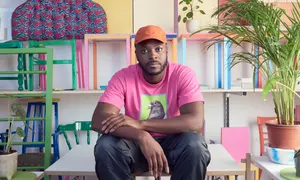
Growing up in a working-class family on a council estate in north London, designer Yinka Ilori was used to a make-do-and-mend approach to clothes and distinctly remembers arriving at school in a uniform two sizes too big that his mum assured him he would grow into.
However, it was on his first trip to Nigeria – where his parents were born and raised – that he really became aware of reuse and recycling. “People were using old concrete blocks or tyres as seating, or previously worn fabrics for upholstery,” he says. “It was fascinating to see them using the everyday objects around them as part of designed objects.”
He studied furniture design at London Metropolitan University, where a brief to combine two discarded chairs into one reignited his passion for reuse. “Seeing two chairs from two different worlds come together to create a new narrative blew my mind,” he says. “I suddenly saw chairs not just as seats, but as objects that could have power and depth in society, and perhaps even change perspectives.”
For Ilori, the use of waste in his work is about more than just the environmental impact – it is about storytelling. Inspired by the Nigerian parable, “No matter how long the neck of a giraffe is, it still can’t see the future,” his breakthrough project, If Chairs Could Talk, told the stories of five childhood friends.
“I grew up in a society where people are pre-judged,” he says. “Of those friends, some are famous actors, some are lawyers, and some are stuck inside a criminal justice system they’ve lost all faith in. I wanted to tell their stories.”
Ilori is now working on larger-scale architectural projects, but is still concerned with reuse – his Colour Palace for Dulwich Picture Gallery was dismantled and repurposed into planter kits for schoolchildren and he now has a commitment to legacy written into his contracts, arguing that there is little point in using recycled materials if they can’t go back into the circular economy later. “For the first time ever, I am really hopeful,” he says. “The conversations I am having now are positive, empowering and fair. I am excited for the future.”
